EPA Will Destroy Jobs, Not Create Them
I know my environmental writings upset some of you, but I must press on… In this post I take on a new study from the Political Economy Research Institute. An excerpt:
Glancing through Appendix B of the PERI report, in which they explain the method by which they come up with such counterintuitive conclusions, shows that it truly is based on the crude “insight” that forcing businesses to spend money complying with new regulations, will cause them to hire workers. There is nothing in the PERI study showing that what these workers are doing is beneficial to the economy; it is the mere fact of their hiring per se that is supposed to be the benefit.
To demonstrate the problem with this approach, we’ll do the folks at PERI one better. To repeat their argument: they are claiming that the EPA’s new pollution regulations will create 640,000 years of work directly flowing from the need to comply with the new rules. But if that’s supposed to be a good thing, then why not pass a further regulation specifying that anyone performing upgrades to power plants must work with one hand tied behind his back? We haven’t done a formal simulation as the PERI folks have done, but we bet our augmented regulations would easily require 2 million years of work directly in the generation sector. So the IER plan creates far more jobs than the modest EPA proposal, especially when you factor in the indirect benefits flowing to the massage therapists who have a surge in arm and hand cramps to deal with.
…
If proponents of the EPA’s new regulations want to admit that they will hurt the conventional economy, but will yield benefits in the form of reduced air pollution or global warming, then that is at least a coherent argument. To see if the plan made sense, we would then face the empirical question of seeing whether the alleged environmental benefits came at too high a cost in terms of lost jobs and lower economic output.But that’s not what the folks at PERI are claiming. Instead, they are mixing up their costs with their benefits. They are saying that it is a good thing that it will take more workers to produce electricity, and hence drive up electricity prices.
Murphy Twin Spin on TSA and Subjective Value
This month I have the EconLib article. It is on privatizing airport security. You have seen some of this discussion in other venues but here I take it further, for example:
By taking such critical decisions out of the hands of a government agency—which is not bound by rational cost-benefit calculations and yet, in a sense, is more accountable to public opinion—we could largely diffuse the sensitive issue of discrimination.
Currently, many Americans decry the “political correctness” of both the Obama and George W. Bush Administrations and demand racial profiling of airline passengers. Let’s stop patting down Granny, these critics say, and instead focus on the guy in a turban named Mustapha. Naturally, those Americans concerned about civil liberties deplore these calls and argue that such policies would do little to intercept actual terrorists.
By having their own money on the line, insurance companies would have the proper incentives to implement only those procedures that actually promoted safety, and their decisions would be less controversial because there would be numerical support to back them up.
Right now, life insurance companies charge much higher premiums for clients who smoke or have diabetes. Although some complain about such “discrimination,” most people understand that these are straightforward business decisions. If a particular health insurance company really were charging smokers punitive rates—perhaps because its CEO lost a parent to lung cancer and he had a chip on his shoulder—then competitors would offer lower premiums and capture the business of many of the smoking clients.
Then over at Mises.org I have an article on subjective value and objective market prices. A lot of this is statement of basic principles but maybe you never thought of it like this:
[I]f I buy 100 shares of stock at $10 apiece, we can conclude three things:
(1) I valued the 100 shares of stock more than my $1,000.
(2) The seller valued the $1,000 more than his 100 shares.
(3) The market value of the 100 shares equals $1,000. Someone else who owns, say, 50 shares of the same stock would think that it constituted $500 of wealth in his portfolio. All that statement means is that the last traded price was $10 per share.
Once again, we see the importance of distinguishing between subjective valuation and objective market prices.
Network Lock-In Bask
OK kids, I recently took the plunge and got a MacBook–refurbished because I’m cheap. I am still waiting for disaster to strike, as I leave the tender bosom of Bill Gates. (My compromise was that I installed MS Office on this intriguing, lightweight, elegant, and very white machine.)
So here’s a dumb question: What is the easiest way for me to move all of my documents from the PC over to this thing? Should I just take a memory stick and shuttle it back and forth? Or is there a more elegant way?
Also, since I’m asking dumb questions, how the heck do I turn my printer onto Black & White and Draft mode? I have an HP Desket 932C that dates from the Precambrian Era. When it prints normally, it literally takes about 30 seconds per sheet. On the PC I could easily change the settings from either within the printer dialog box or from the master setup, but on this newfangled MacBook I can’t figure out how to do it.
More generally, any words of wisdom from recovering PC users would be appreciated.
Is Intelligent Design Theory Scientific?
Last week’s post turned into a typical argument over whether Intelligent Design (ID) is a “scientific” theory. Let me say upfront that part of this argument is pure posturing (on both sides); the people who are pro-ID want to be able to say it’s scientific, while its opponents want to be able to say it isn’t. The unspoken premise, of course, is that “scientific” means “true,” which isn’t actually true.
Now the commenters on Free Advice are actually above such pettiness, and I don’t mean that sarcastically. In particular, Daniel Kuehn and Gene Callahan were (at various points) challenging whether ID can be properly called scientific, not because that would render it a false notion, but simply in the interest of explaining why so many mainstream scientists object to it.
In the present blog post, I want to challenge this interpretation (particularly the strong version that Callahan laid out). In other words, I am going to argue that ID is “scientific” or at least, it can be. The standard arguments from biologists and others against ID–by which they try to rule it out of court as not even the type of thing that scientists could do, let alone that it is true–are simply wrong.
To set the context, here is what the Union of Concerned Scientists had to say about Intelligent Design theory:
The intelligent design movement is exceptionally good at creating false controversies and misconceptions. Yet their basic claims are easily debunked.
*There is scientific controversy over evolution: There is no debate about evolution among the vast majority of scientists, and no credible alternative scientific theory exists. Debates within the community are about specific mechanisms within evolution, not whether evolution occurred.
…
*Intelligent design is a scientific theory: A scientific theory is supported by extensive research and repeated experimentation and observation in the natural world. Unlike a true scientific theory, the existence of an “intelligent” agent can not be tested, nor is it falsifiable.*Intelligent design is based on the scientific method: Intelligent design might base its ideas on observations in the natural world, but it does not test them in the natural world, or attempt to develop mechanisms (such as natural selection) to explain their observations…
It is the last two points above, that I claim are totally bogus. I actually got Kuehn to agree that the Union of Concerned Scientists used sloppy wording, but then Callahan rushed in to defend them:
[T]he postulates of their discipline prevent them for searching for such evidence [of design], i.e., a presupposition of all of the physical sciences, including biology, is that the proper sort of causes to search for are mechanical causes that operate without intelligence or design. So of course they see no evidence of intelligent design — they deliberately don’t look for it!
Now, I think this is the RIGHT way for them to do research. Their job is to see how far they can take the principle of mechanical causation. They are mistaken only if and when they base silly pronouncements like “Evolution shows [there] is no place for God in the world” on that research!
Gene is toeing the standard biologist line, but I think he is wrong. I will make my point with two examples, one fanciful, the second less so:
FIRST EXAMPLE: Suppose for the sake of argument that all life on Earth was designed by intelligent aliens from a distant galaxy. Now those aliens come from a planet where life did evolve spontaneously from the primordial soup, the way most scientists currently hypothesize happened on Earth. And in fact, if people like Michael Behe looked at the cells taken from the alien planet, they would agree that there was no “irreducible complexity.” It would be entirely plausible that the intelligent aliens could have evolved through “mindless” processes over billions of years, because the structures in all life forms on their planet would not have any “jumps” or features that didn’t confer an immediate reproductive advantage.
Anyway, these intelligent aliens come along, see Earth 4 billion years ago, and realize it is a great place for them to seed life. The aliens design a supercell with all sorts of information packaged into it, taking into account the environment in which its descendants will evolve. The aliens program in all sorts of “irreducible complexity” in this initial supercell.
This scenario is admittedly fanciful, but it is theoretically possible. That could be just how it happened. Now if that were the case, how would humans ever learn the truth? According to the Union of Concerned Scientists, it would have be up to lawyers, philosophers, and car mechanics to realize that the current hypotheses about the origins of life are wrong, and to posit a rival explanation that better explained the facts which we can observe today. If a biologist or chemist or astronomer ever chimed in on the issue, he or she would be leaving the realm of science. Even if the aliens left us a message (in an abandoned spaceship, say), or even if the aliens showed up and told us what really happened, none of the biology textbooks could incorporate such unscientific things into their chapters on the origin and evolution of life.
SECOND EXAMPLE: Key military and government officials start dropping like flies. Autopsies reveal they have succumbed to some previously unknown virus. The strange thing is, the virus’ genetic material is such that it is harmless for just about any human it could come in contact with. It’s almost as if it has been “designed” to take out the key officials. On a lark, the government scientists take a sample of blood from the President, Vice President, and people in Congress. It turns out that the virus attacks their cells too. But the scientists let the virus interact with thousands of blood samples from ordinary Americans, and nothing happens.
The President calls in the leading researchers on bioweapons and counterterrorism. He says, “Our intelligence networks have been warning for years that the government of X has been working on just such a virus. However, we have no real proof, just some intercepted emails talking of intent. Can you look at the virus and tell me if it could be the result of natural evolution? Or can we be absolutely sure that this was deliberately designed to take out our people?”
The assembled scientists are horrified at the Commander in Chief’s ignorance. “Mr. President,” they protest, “don’t you know that we are scientists? How in the world can we even entertain the notion that something under our microscopes was designed? Your hypothesis of ‘intelligent foreign scientists’ is non-testable and nonfalsifiable. If you want, we will come up with a story about what the chemical composition of the atmosphere must have been like, 2 billion years ago, to explain why this virus is the way it is. But that’s the most you can ask of us in our capacity as scientists.”
So does everyone still like the Union of Concerned Scientists’ definition of the boundaries of a scientific theory?
Paging Bill Woolsey on the Fed’s Accounting Skullduggery
Like the Spaniard in The Princess Bride knew he needed the Man in Black, when I try to parse the Fed’s notorious January 6 accounting change, I know I need the economist who wrote this article (“Who Owns the Fed?”).
So here’s the Fed’s announcement, with my placeholders and bolding added:
The Board’s H.4.1 statistical release, “Factors Affecting Reserve Balances of Depository Institutions and Condition Statement of Federal Reserve Banks,” has been modified to reflect an accounting policy change that will result in a more transparent presentation of each Federal Reserve Bank’s capital accounts and distribution of residual earnings to the U.S. Treasury. [#1] Although the accounting policy change does not affect the amount of residual earnings that the Federal Reserve Banks distribute to the U.S. Treasury, it may affect the timing of the distributions. Consistent with long-standing policy of the Board of Governors, the residual earnings of each Federal Reserve Bank, after providing for the costs of operations, payment of dividends, and the amount necessary to equate surplus with capital paid-in, are distributed weekly to the U.S. Treasury. The distribution of residual earnings to the U.S. Treasury is made in accordance with the [#2] Board of Governor’s authority to levy an interest charge on the Federal Reserve Banks based on the amount of each Federal Reserve Bank’s outstanding Federal Reserve notes.
Effective January 1, 2011, as a result of the accounting policy change, [#3] on a daily basis each Federal Reserve Bank will adjust the balance in its surplus account to equate surplus with capital paid-in and, in addition, will adjust its liability for the distribution of residual earnings to the U.S. Treasury. [#4] Previously these adjustments were made only at year-end. Adjusting the surplus account balance and the liability for the distribution of residual earnings to the U.S. Treasury is consistent with the existing requirement for daily accrual of many other items that appear in the Board’s H.4.1 statistical release. The liability for the distribution of residual earnings to the U.S. Treasury will be reported as “Interest on Federal Reserve notes due to U.S. Treasury” on table 10. [#5] Previously, the amount necessary to equate surplus with capital paid-in and the amount of the liability for the distribution of residual earnings to the U.S. Treasury were included in “Other capital accounts” in table 9 and in “Other capital” in table 10.
For those who don’t see what the big deal is in the above–and you’re not alone, it took the financial sector a good two weeks to realize it–see Robert Wenzel’s analysis.
So my questions for Woolsey, who (by my back-of-the-envelope calculations) has written a novella in his arguments with Captain Freedom on this blog, and so should jump at the chance to share his wisdom with a wider audience:
#1: Here, are they referring to the fact that if the Fed suffers a capital loss, it will halt the flow of remitted earnings to the Treasury, until that loss is whittled away? If so, are they being honest when they say it won’t affect the total flow of earnings, but rather just the timing? Before this rule change, how would the Fed ever have recapitalized itself after taking a hit? Would it have happened more gradually, so that the flow of remitted earnings to the Treasury would have been reduced more modestly, but for a longer period, than will be the case now?
#2: What the heck are they talking about? I don’t think I ever knew that the Fed had to pay interest on Federal Reserve Notes. Is that just some internal costing mechanism to allocate the burden of remitted earnings among the various Fed banks? And what is the interest rate?
#3: Can you say this in English?
#4: They are making it sound as if they are simply doing something daily, which previously would have been done yearly. Is that correct? And if so, then why is everybody acting as if the Fed is doing something crooked? Was it standard practice to skirt insolvency on an annual basis before, and now it’s done weekly?
#5: This is the money line, right? The Fed is making it sound like it’s just putting its “surplus” somewhere besides its “capital account,” when this also opens the door to them putting a negative surplus–aka a loss–somewhere besides its capital account. If I’ve read that correctly, then can you relate it to a standard balance sheet? A lot of people are saying stuff like, “The Fed is moving its losses off the left-hand side of its balance sheet.” But that’s not how I’m reading that. I think they will still reduce the value of their assets, but then on the Liabilities and Capital side, they won’t reduce Capital correspondingly. In order to make the right hand side fall as much as the Assets fell, they will instead put in a negative number in the Liabilities. This pulls down the right hand side of the balance sheet, while still maintaining Assets > Liabilities.
Is this about right? And of course people other than Bill Woolsey can chime in.
Suggestion for Cool YouTube on Federal Debt
Darren C. sent me this neat website where you can graph the US federal debt going way back to 1791. I was playing with it and came up with (what I think would be) a really cool 3-minute YouTube. But to see my vision, you have to do the following on the site:
* First set the range from 1791 to 1816. You can see how the War of 1812 saw a big runup in the debt.
* Then do 1816 to 1866. You can see how on this scale, the Civil War (or War of Northern Aggression, etc.) blows the previous history out of the water.
* Then do 1866 to 1919. You can see that on this scale, it looks like nothing is happening until BOOM, World War I makes the debt explode.
* Then do 1919 to 1946. Same story: World War II is now the only thing going on.
* Do 1946 to 1980. It’s not as intense, but it looks like going off the gold standard is as significant as a major war in terms of adding to the debt.
* Finally, do 1970 [sic] to the present, to see just how much debt the Reagan, G.W. Bush, and Obama administrations are racking up. They dwarfed what happened in the 1970s.
So my vision is a YouTube that starts following the timeline, while the arrow of the debt moves along. At each major event, the narrator (either spoken or in text) explains what it was. The camera keeps pulling back or something, so that you can see how what was a huge jump in the beginning (from pre-Civil War debt to post-Civil War debt e.g.) is nothing when you go from pre-World War I debt to post-World War I debt etc.
The effect you want to give you the viewer is similar to what happens in those “scale” videos where you zoom out and see how many Earths fit in Jupiter, how many Jupiters fit in the sun, how many suns fit in Betelguese etc.
So if someone wants to make that video–maybe title it “War & Fiat Money–Expensive Disasters” or something–I think it could be really cool.
Bask on MBS
(Note for newcomers: “Bask” is short for “Blog ask.” There is no begging at Free Advice.)
I was looking at the NY Fed’s page on its SOMA holdings and noticed that in a footnote on the $965 billion in mortgage-backed securities it says:
Guaranteed by Fannie Mae, Freddie Mac, and Ginnie Mae. Current face value of the securities, which is the remaining principal balance of the underlying mortgages.
So help me out here. Where those “toxic” MBS guaranteed by the agencies all along? If so, then why were they trading below par (before The Ben Bernank saved the day)?
Or, did the agencies guarantee them only after the Fed bought them?
Finally, if the housing market crashes again and a bunch more people default, does that mean the taxpayers will possibly have to make the Fed whole?
“If the Fed Started Monetizing the Debt, We’d Be in Trouble.”
So say the people who think people like me are worry warts. It’s always useful to show things like this (HT here, but they in turn got the image from ZeroHedge):

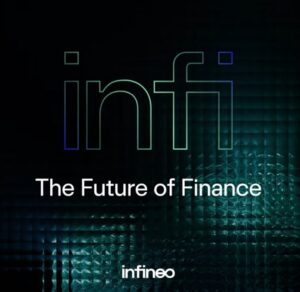
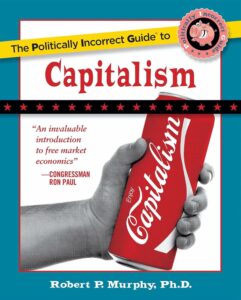
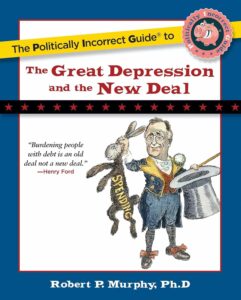
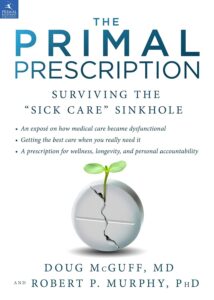
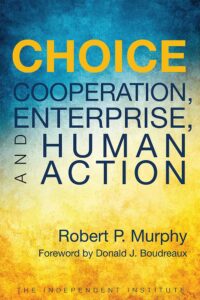
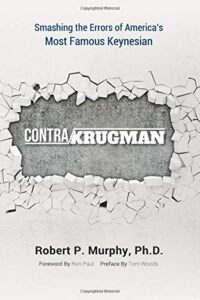
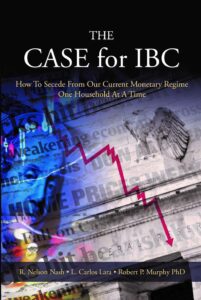
Recent Comments